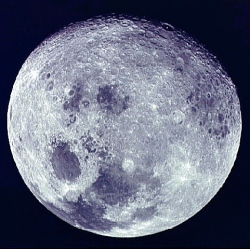
The near side of the moon hosts larger impact basins than the satellite’s far side, and the explanation lies in key differences between the two hemispheres, a new study suggests.
Scientists have long understood that craters form at an even rate on the surfaces of both sides of the moon, but new work reports that ancient asteroid impacts on the near side of the moon produced larger basins than those on the far side.
The surprising difference hinges upon the composition of the crust on the two sides of the moon. The near side, which always faces Earth, was warm during the early formation of the moon and subjected to volcanic activity. This might have created an ideal environment for big craters to form, scientists said.
"When we look at the maps of both hemispheres, we realize there are more big basins on the near side than on the far side," said Katarina Miljkovic of the Institute de Physique du Globe de Paris, lead author of the new moon study published in the Nov. 8 issue of the journal Science. "There are eight of them on the near side that are bigger than 300 kilometers [186 miles]… and only one on the far side."
Using data gathered by NASA’s Gravity Recovery and Interior Laboratory (GRAIL) spacecraft, Miljkovic and her colleagues ran computer simulations to model the effects of long-ago impacts on the moon’s crust. They found that an impact on the near, hotter side of the moon would form a crater about two times larger than craters formed by a similarly sized asteroid on the cold, far side of the moon.
